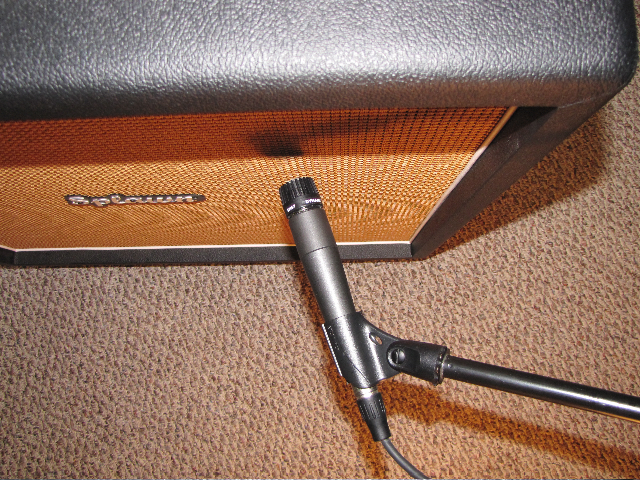How to mic a guitar amp: get the best placement and tone

All tuned up? Great. Let’s get into some microphone placement techniques.
There’s a lot of info and some great books out there on the subject, so definitely do so some research. For now, though, I’m just going to keep this on a basic level.
Assuming you’re using a dynamic microphone such as a Shure SM57, here are some general rules and guidelines to keep in mind:
* The closer you move the mic to the center of the speaker, the brighter and more present it will sound. Conversely, as you move the mic toward the outside edge, it will sound darker and bassier.
* The closer the mic is to the speaker, the more direct and immediate the sound will be. Obviously, this helps with eliminating the sound of the room you are recording in, and if your room is less than ideal, this might be your best option. If you’re recording a particularly loud source, there’s a chance you may experience what is known as proximity effect with the mic. Basically this is a build-up of low frequencies that you may have compensate for either with EQ or by changing your mic placement.
* If you have a cool room with maybe some wood floors, and if there doesn’t seem to be a problem with any weird reflections, then distant micing can be a can be a potential option. I would suggest recording a close-mic track as well just in case you need it. It really depends on the song and what you’re going after because distant micing definitely sounds different.
* On-axis or off-axis? On-axis basically means pointing the mic directly at the speaker with no angle, so in effect, the mic would be considered to be perpendicular to the front of the cab. This tends to sound brighter. but at the same time there is a greater chance of proximity effect. Off-axis means angling the mic a little to the side. This can make the high end roll off a little and make things sound a little smoother.
Get The Pick Newsletter
All the latest guitar news, interviews, lessons, reviews, deals and more, direct to your inbox!
All of these techniques are considered standard issue, and when you’re experimenting, just remember that there is no right or wrong way - it’s really just all about what suits the song the best.
When I record guitars, I usually start with a SM57 pointed on-axis about one or two fingers width off the grill of the cab with the mic aimed just outside of the voice coil dust cover. Sometimes it’s handy to have a flashlight to see the actual speaker through the grill cloth.
This usually gets me in the ballpark right away, and if I need a little more high end I’ll move the mic toward the center a bit. If I need less, I’ll move it out toward the edge. You’ll find out that small moves make big changes in the tone, so I usually move the mic in half-inch increments.
I know what my usual amp settings should be, so if I find that I’m pushing the tone controls more than I’m comfortable with, I’ll go move the mic instead. Most of the time, I use my vocal booth or a bedroom in another part of the house to record guitars in and neither has a room sound that I’m interested in, so I almost always close-mic the cab.
Have fun and spend some time getting to know how mic placement can affect your tone and you’ll be one step closer to achieving killer guitar tracks!
Joel Kosche is the lead guitarist for the chart-topping band Collective Soul. Prior to joining the group in 2001, Joel was a fixture in the Atlanta music scene playing in local bands and working part time as a guitar-tech for various artists, including Steve Winwood. When he’s not on tour or in the studio, Joel, a self-professed "gearhead" and “tinkerer,” enjoys building and modifying guitars and tube-based amps. Outside of his duties with Collective Soul, Joel has appeared on numerous recordings, including the epic "Shadowman" from Kansas lead singer Steve Walsh. Most recently, Joel released his first solo record, Fight Years, a self-produced effort recorded mainly in his home studio (Flame Under Heel Studios) and released in June 2010.
“If you’ve ever wondered what unobtanium looks like in amp form, this is it”: Played and revered by Stevie Ray Vaughan, Carlos Santana, and John Mayer, Dumble amps have an almost mythical reputation. But what's all the fuss really about?
“For the price, it’s pretty much unbeatable”: Harley Benton JAMster Guitar review










